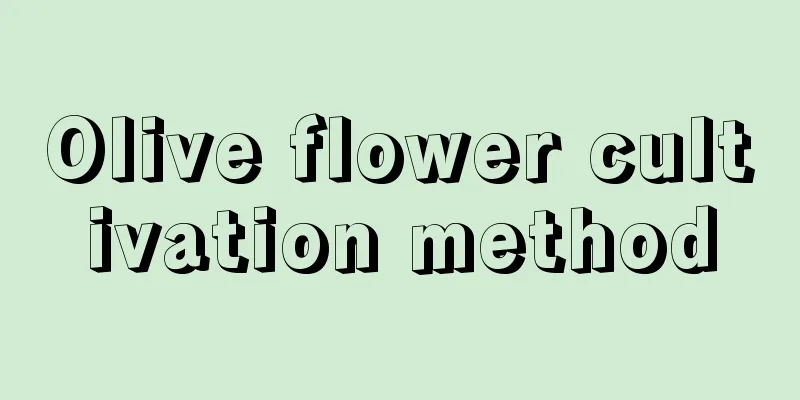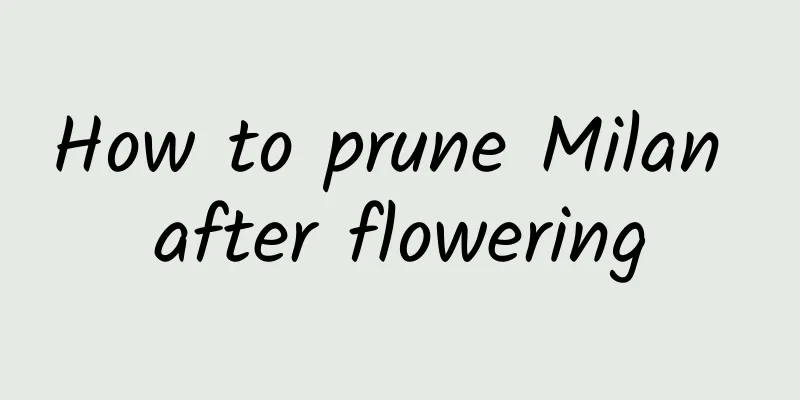Olive flower cultivation method

1. Maintenance methods1. Temperature: It can withstand low temperatures and will not be frozen even at minus ten degrees Celsius. Therefore, it can be raised outdoors regardless of the north or south. No anti-freeze measures are needed in winter, and it can safely overwinter. 2. Watering: Except for summer, watering once or twice a week is sufficient in other seasons. Because of its drought-resistant characteristics, excessive watering will be detrimental to its growth. The temperature is relatively high in summer, and water evaporates quickly. It also coincides with its growing season, so the demand for water will be slightly higher than in other seasons. It needs to be watered two to three times a week in summer. If it is cultivated in the open field, waterlogging prevention measures need to be taken. Proper water control and drainage are needed in the rainy season to prevent the roots from being soaked in water for a long time. 3. Fertilization: Young trees have a relatively high demand for nutrients and need to be fertilized once every two months, with nitrogen fertilizer being the main fertilizer. Mature plants need to be fertilized once every three months, with nitrogen, phosphorus and potassium compound fertilizer being the main fertilizer, because compound fertilizer is rich in nutrients and can meet the needs of the plants in all aspects. 4. Light: It likes sunshine and the daily light time cannot be less than eight hours. During the seedling stage, appropriate shading is needed at noon. After it matures, it does not need shading and natural light is sufficient. 2. Breeding techniques1. Weeding: Weeding is required frequently during the growth period of the plant to prevent weeds from competing with the plant for nutrients and causing malnutrition of the plant. Herbicides are harmful to the plant, so when spraying, avoid the plant body to avoid affecting the growth of the plant. The time for spraying is usually before the weeds set seeds or in late June. 2. Medicine: Regular weeding is required during the cultivation process to prevent weeds from competing with plants for nutrients. Glyphosate can be used for weeding, and it must be diluted before use. 3. Problem Diagnosis1. Yellow leaves: Root rot of the plant is mostly due to insufficient light. Just increase the amount of light gradually. 2. No flowering: The plant may not bloom because it does not have sufficient nutrients and needs to be given more nutrients. In addition to using root fertilizer, you can also use foliar fertilizer. You can mix leftover beer with water and spray it on the branches and leaves of the plant to supplement the nutrients of the branches and leaves. IV. Other issues1. Toxicity: Not only is it non-toxic, it is also edible. 2. Flower language: The language of olive flowers is harmony, peace and unity. |
>>: How to grow the Night Guanyin Lotus
Recommend
How to grow Guanyin bamboo well
1. Hydroponic plants (1) Type of water: For hydro...
How many days does it take for broad beans to sprout and grow out of the soil?
Broad beans grow well in warm and humid climates ...
Soybean planting time
As an important grain and oil crop, soybeans occu...
How to judge whether it is time to water succulents
When watering succulents, you need to pay attenti...
What flowers are suitable for growing in Yangquan? What are the city flowers and trees?
1. Climate characteristics of Yangquan Yangquan h...
How to Plant Mint Seeds
Mint Seeds Introduction Mint seeds grow in the fr...
How to plant copper coin grass
1. How to plant First, pour the seeds into a cont...
How to grow African violets in autumn
1. Sufficient water African violets prefer humidi...
When is the best time to plant autumn cucumbers?
Cucumber is a common vegetable on the table. It h...
How to grow gardenia well
1. Flower soil If you want it to grow well, the f...
How to prune potted roses
When to prune roses Potted roses can generally be...
Indoor cultivation methods and precautions for gardenia
1. Breeding methods 1. Soil: It prefers soil with...
How to grow hydrangea
1. Lighting To grow hydrangeas, you need to creat...
How to propagate purple Oxalis and what to pay attention to
Purple Oxalis Propagation The main methods of pro...
Cultivation techniques and precautions of Osmanthus fragrans
Osmanthus fragrans, also known as seven-mile frag...









